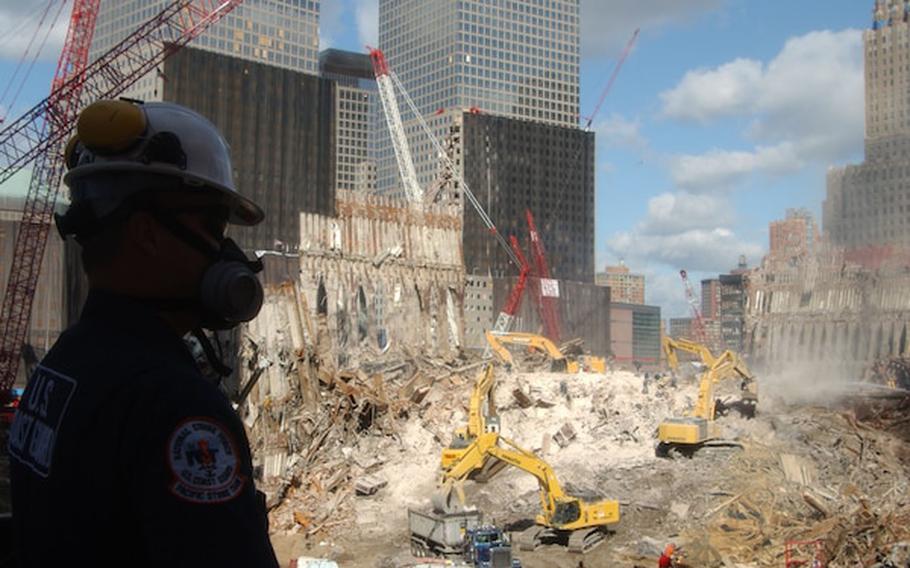
Petty Officer Ray Brown from the Coast Guard Pacific Strike Team looks out at Ground Zero in New York City on Sept. 17, 2001. The Coast Guard along with the EPA is monitoring personnel and air safety concerns at Ground Zero. (Tom Sperduto/U.S. Coast Guard)
When two hijacked airplanes flew into the World Trade Center on Sept. 11, 2001, first responders rushed to the scene. Thousands more followed after the twin towers' collapse, working in the toxic dust that billowed up from the pulverized buildings. Now, a study links the day workers got to the site with their risk for liver disease.
In the American Journal of Industrial Medicine, researchers from the Icahn School of Medicine at Mount Sinai grouped 1,788 responders based on the time they arrived at the scene of the terrorist attack. They analyzed CT scans for signs of hepatic steatosis, also known as fatty liver disease, which can cause scarring in the liver, cancer or liver failure. Steatosis is associated with exposure to a variety of chemicals, including toxic dust.
The researchers found that the sooner a responder arrived at the WTC, the more likely they were to show signs of steatosis. More than 14% had signs of the disease, and those who got to the site within two weeks of the attack were most likely to show liver changes.
And 17% of those who arrived on Sept. 11 had signs of steatosis, compared with 16% for those who arrived the next day, 10.9% for those who arrived between Sept. 14 and 30, and 9% for those who arrived in October or beyond.
Nearly 81,000 responders are enrolled in the World Trade Center Health Program, which provides medical monitoring and treatment for people who responded to the attacks. In a previous paper, the researchers found that WTC workers had three times as much evidence of liver disease compared with those who hadn't responded to the attacks.
"Now that we have this link, the next step is to understand why or how the toxic dust actually causes liver damage," Artit Jirapatnakul, an assistant professor of radiology at Icahn Mount Sinai and the paper's first author, said in a statement.
In 2019, the 9/11 Museum dedicated a Memorial Glade on museum grounds to those who responded to the tragedy and developed health problems or died because of their work. According to the WTC Health Program, 4,343 members have died as of March 31.